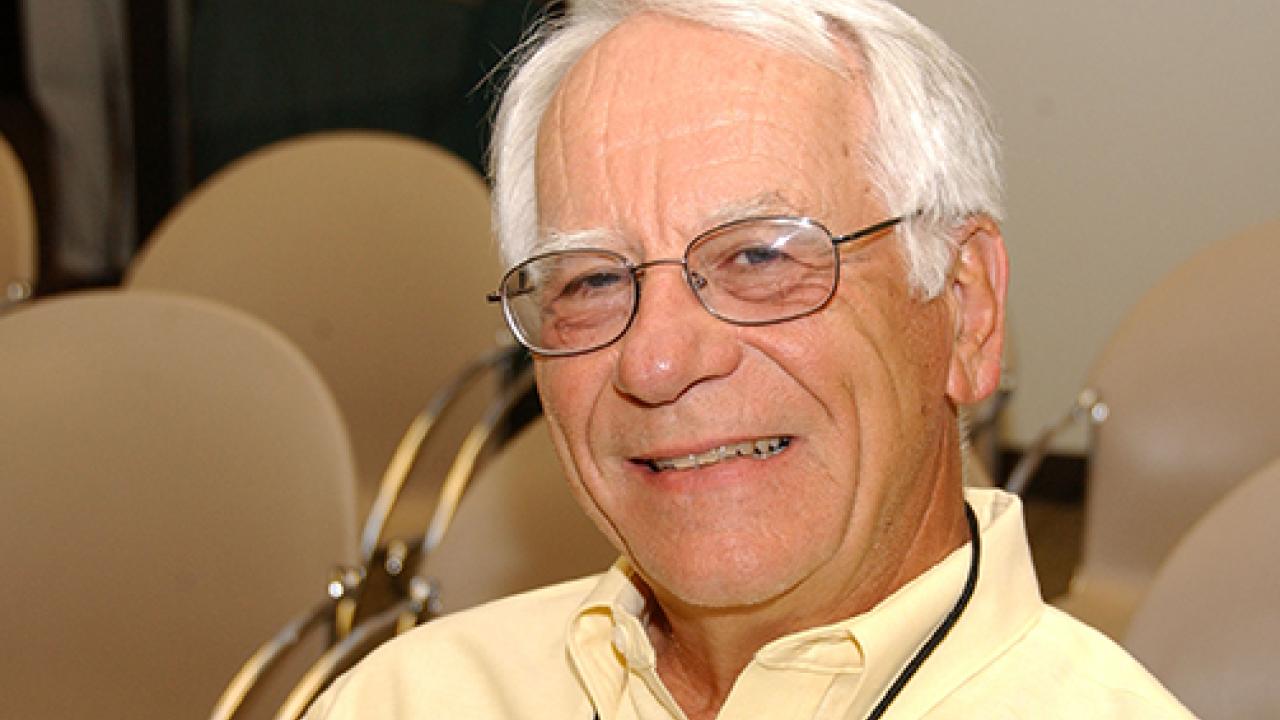
Legendary Medical Entomologist Bruce Eldridge Dies at 91
His Exemplary Military, Academic and Administrative Career Spanned Six Decades
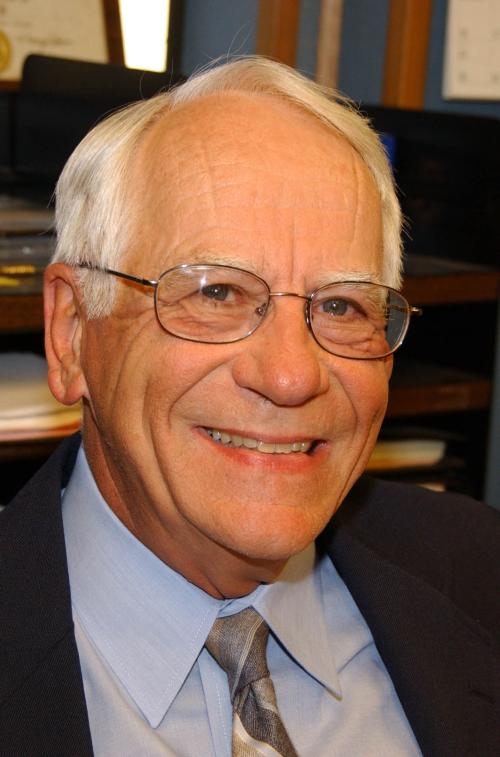
UC Davis professor emeritus Bruce Frederick Eldridge, an internationally recognized medical entomologist whose exemplary military, academic and administrative career spanned more than six decades, died Wednesday, Feb. 5 in Davis at age 91.
Dr. Eldridge began his entomology career in the U.S. Army, chairing the Department of Entomology, Walter Reed Army Institute of Research, Washington, D.C., from 1969 to 1977. He completed his 21-year military career in 1978, retiring as a colonel, and then served as professor and chair of the Oregon State University Department of Entomology from 1978 to 1986. He joined the UC Davis entomology faculty in 1986, and directed the statewide UC Mosquito Research Program (UCMRP) for 14 years.
A highlight of his career: receiving the international Harry Hoogstraal Medal for Outstanding Achievement in Medical Entomology in 2007 from the American Society for Tropical Medicine and Hygiene. At the time, Eldridge was one of only 15 entomologists to receive the award since 1987, and the third at UC Davis.
Following his retirement, Eldridge maintained an office at the Center for Vectorborne Diseases (CVEC) working on technological issues to incorporate surveillance data on the California Vectorborne Disease Surveillance System website. As “Dr. Vector,” he responded to arbovirus questions online and continued to provide leadership in mosquito control in California, said Christopher Barker, a professor of pathology, microbiology and immunology at the UC Davis School of Veterinary Medicine. Barker, who received his doctorate from UC Davis in 2008, was Eldridge’s last graduate student.
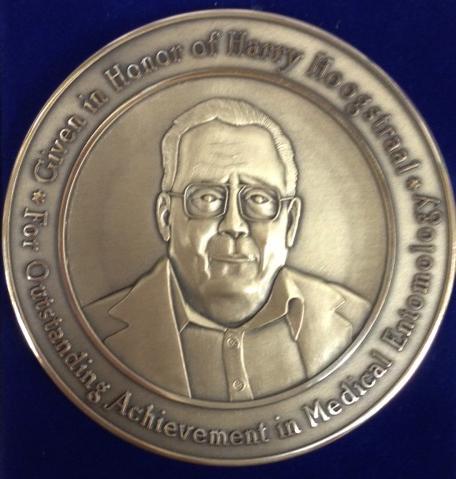
“Even as he passed the age of 90, Bruce continued to contribute to mosquito control and the science of medical entomology,” Barker said. “He served as the Yolo County representative on the board of trustees for the Sacramento-Yolo Mosquito and Vector Control District, and he was a long-serving member of the selection committee for the William C. Reeves New Investigator Award, which is given annually for the best student paper presented at the annual conference of the Mosquito and Vector Control Association of California.”
UC Davis medical entomologists William Reisen and Thomas Scott, now both emeriti professors, nominated Eldridge for the Hoogstraal Medal. In their nomination letter, they described his career as “outstanding.” Eldridge developed administrative programs in both military and academic environments; advanced research in mosquitoes and the arboviruses they transmit, culminating in 153 publications; and mentored 13 doctorate and postdoctoral students and other young scientists.
“Throughout his career, Bruce has remained the consummate professional, always representing himself, his country, his state and his university at the highest professional and personal level,” they wrote. Eldridge served as chair or president of the four primary American medical entomology societies, and “head of the Entomology Department at the prestigious Walter Reed Army Institute of Research, the highest position possible for a military entomologist.”
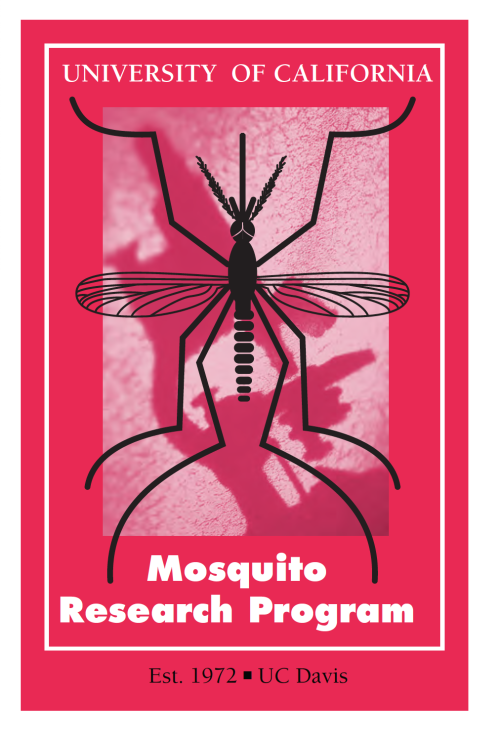
Eldridge, as director of the UC Mosquito Research Program from 1986 to 2000, helped to broker the move of the Arbovirus Research Unit from the School of Public Health at Berkeley to the UC Davis School of Veterinary Medicine, thereby founding the Center for Vectorborne Diseases (CVEC). Eldridge subsequently served as interim director of CVEC.
“The move led to his new research on arbovirus ecology in seasonal wetlands and on modernizing and improving the California Encephalitis Virus Surveillance Program,” Reisen and Scott wrote. “Through Bruce’s pivotal relationships with the Mosquito and Vector Control Association of California and the California Department of Public Health, CVEC became a key player in arbovirus research and surveillance in California.”
Born in San Jose. Eldridge, born March 26, 1933, in San Jose, received his bachelor’s degree in biological sciences (1954) from San Jose State College; his master’s degree in entomology (1956) from Washington State University, Pullman; and his doctorate in entomology from Purdue University (1965) while in the military.
Early in his career, Eldridge pioneered research on the overwintering Culex pipiens mosquito and the St. Louis encephalitis virus, resulting in a series of publications in high-profile journals, including Science. His studies helped resolve the role of various mosquito and vertebrate species in virus transmission cycles, including overwintering.
“Notably,” Barker said, “he published seminal studies on the interactions of temperature and photoperiod that induce diapause in the northern house mosquito, Culex pipiens, and the potential for low temperatures to suspend gonotrophic development following blood-feeding, establishing a possible mechanism for arboviral infection leading into the winter.”
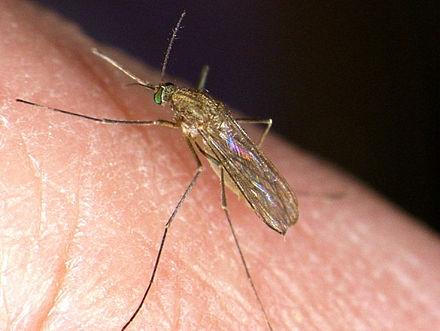
Eldridge followed this early work in the laboratory with a number of classical studies to characterize various aspects of the ecology and seasonality of arboviruses. His work with colleagues at the Walter Reed Army Institute of Research (WRAIR) led to a paper in Science demonstrating isolations of St. Louis encephalitis virus from Cx. pipiens in mid-Atlantic states in mid-winter, which provided field evidence that the virus could overwinter locally in mosquito populations.
“Bruce contributed a number of papers on the ecology of California serogroup viruses in both the eastern and western U.S., and his research in Oregon and California also focused on related work on the ecology of snow-pool Aedes species,” Barker said. “Bruce’s wide-ranging contributions even extended to insect systematics and taxonomy, including papers that clarified the history of species names for the banded foul-water mosquito, Culex stigmatosoma. He also described new sibling species within the Aedes increpitus complex, Aedes washinoi and Aedes clivis.”
During the latter part of his career, Eldridge devoted much of his time to standardizing and modernizing mosquito and arbovirus surveillance data systems. He established early websites for California to report surveillance data in the 1990s, worked with public health officials to establish a system to standardize registration of surveillance sites, and developed the earliest GIS and mapping capabilities for California’s statewide data reporting system. These efforts were particularly valuable when West Nile virus arrived in California in the early 2000s, and in collaboration with Bill Reisen, these early beginnings paved the way for the VectorSurv data management system that is still in use by hundreds of mosquito control and public health agencies across the U.S. today, Barker said.
Always Curious and Eager. Barker praised Eldridge as “an exemplary professional and mentor…He approached his work with humility and respect for his colleagues, always curious and eager to hear new ideas. He was never the loudest voice in the room, although I should point out that he was quite a ham on a theater stage or with a banjo in his hand. His attention to detail was admirable, and he often returned my dissertation drafts marked up with comments on the science interspersed with points about grammar, style, or proper usage of scientific terms.”
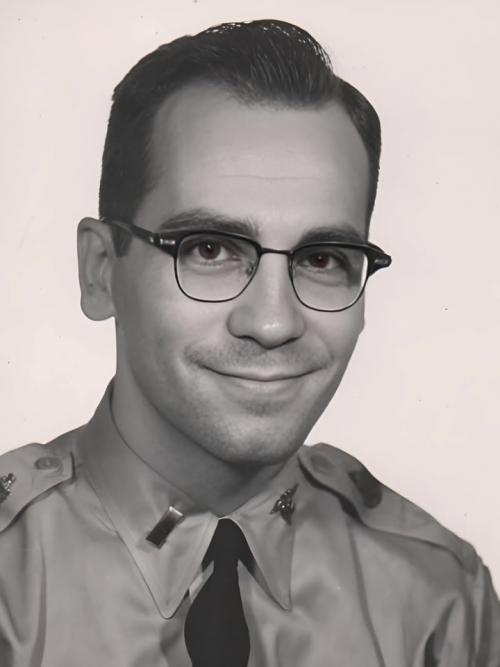
In a 2007 UC Davis interview, Eldridge traced his interest in natural science and biology to his mother, who “loved the outdoors and would take me hiking and teach me the names of flowers, trees and animals.”
Eldridge served as president of the American Mosquito Control Association in 1988; president of the Society of Vector Ecology in 1995; and president of the Second International Congress of Vector Ecology in 1997.
Highly honored by his peers, he was named a Fellow of the American Association for the Advancement of Science in 1981. He received the Medal of Honor from the American Mosquito Control Association in 1999; a Meritorious Service Award in 1989 from the Mosquito and Vector Control Association of California (one of five ever given); and the 1991 John V. Osmun Alumni Professional Achievement Award from Purdue University.
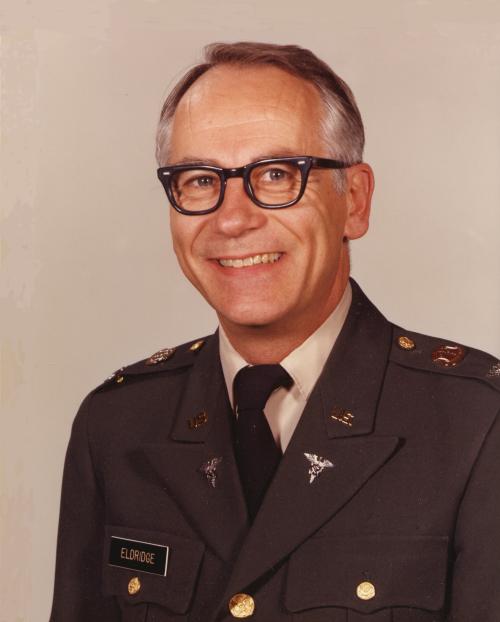
Member of ESA for 70 years. A 70-year member of the Entomological Society of America (ESA), Eldridge was named a Fellow in 2001 and an Honorary Member, the highest ESA award, in 1996. He served as an editor of miscellaneous ESA publications from 1969 to 1977. He edited and co-authored the book, Medical Entomology: A Textbook on Public Health and Veterinary Medicine Problems Caused by Arthropods, and served as an editor of The Journal of the American Mosquito Control Association. (JAMCA).
In the 2007 UC Davis interview, Eldridge said his research led to a better understanding of the winter biology of Cx. pipiens. “During my dissertation work at Purdue, I observed the presence of a phenomenon that later came to be called ‘ovarian diapause.’ I found that if larvae and pupae were reared under short-day conditions, the adult females that emerge have ovaries that remain in an immature state, even if the female mosquito takes a blood meal. A student of Andy Spielman later observed the same phenomenon, for which Andy coined the term ‘ovarian diapause.’"
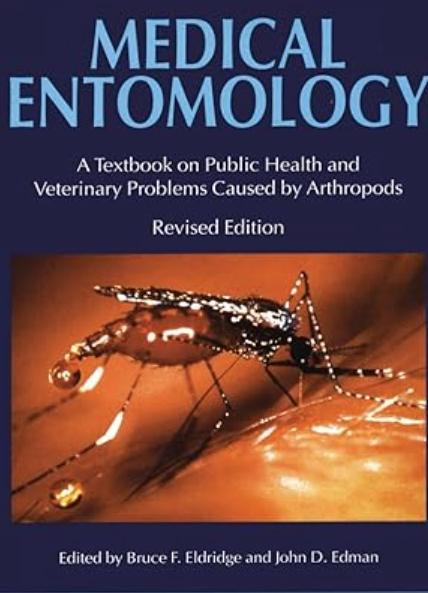
Also, while at Purdue, Eldridge confirmed that while Cx. pipiens, the northern house mosquito, undergoes ovarian diapause, Cx. quinquefasciatus, the southern house mosquito, does not.
During his final assignment at WRAIR, Eldridge and his team discovered that Keystone virus is transmitted from parent to offspring. Their work won a silver medal for best presentation at the Army Science Conference in 1974.
Meritorious Service Medal. As a military entomologist, Eldridge saw duty at Fort Sam Houston, Texas; in Seoul, Korea; in the Panama Canal Zone; and at Washington D.C. During field surveys in South America, Eldridge and his team discovered a mosquito species in crab holes on the Pacific Coast of Colombia that was previously unknown and was named after him as Culex eldridgei. He received the Meritorious Service Medal from the U.S. Army in 1972 for distinguished achievements, and he won the Army’s Legion of Merit in 1977.
As a teacher, he taught courses in entomology, parasitology and preventive medicine in the military, at OSU and at UC Davis. “Perhaps Bruce’s greatest achievement is his willingness to expend his time ‘behind the scenes’ to selflessly promote the careers of those around him,” wrote Reisen and Scott. (Reisen received the Hoogstraal Medal in 2012, and Scott in 2018.)
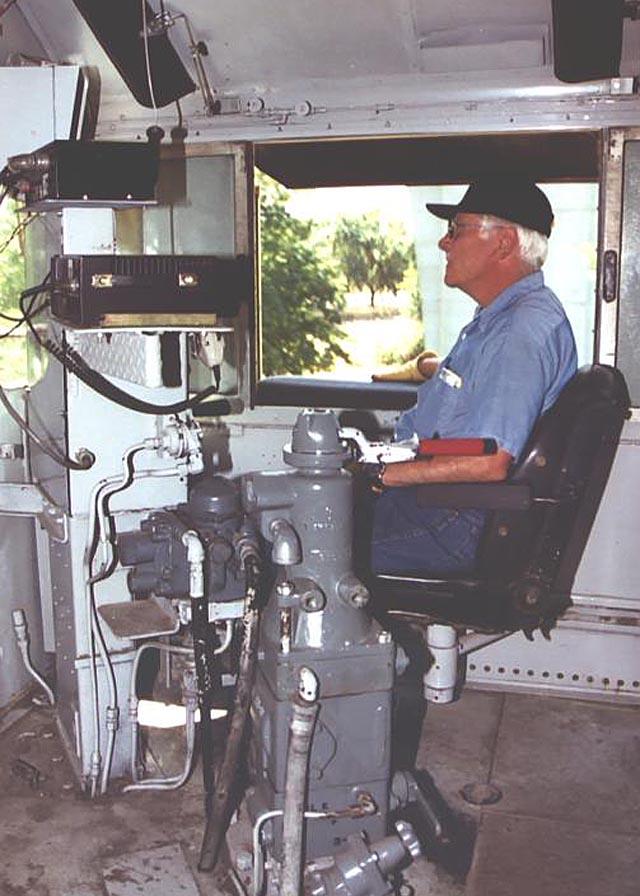
Tributes from Colleagues
UC Davis professor emeritus William Reisen, Department of Pathology, Microbiology and Immunology, School of Veterinary Medicine:
“I interfaced with Bruce intermittently for over half a century, starting when as a colonel in the Army, he defused a blunder by a new Air Force lieutenant in the Philippines and ending in retirement, when I joined his golf outings at Davis. In the 1960s, Bruce helped establish the University of Maryland Pakistan Medical Research Center in Lahore, where I later worked in the mid-1970s. Later after I moved to UC Berkeley, Bruce hosted a critical visit to Oregon State University where he provided important guidance at the onset of my studies of diapause and arbovirus overwintering in Culex tarsalis. After Bruce moved to UC Davis, he repeatedly helped procure funding to support our research at Bakersfield and later at CVEC at Davis. In addition, he passed along his editorship of the Journal of Medical Entomology to me in the late 1980s. Most notable were our co-authored grants from the National Aeronautics and Space Administration and National Oceanic and Atmospheric Administration which investigated the use of satellite data to map mosquito populations and detect unmaintained swimming pools. These projects, in part, formed the basis of Chris Barker’s dissertation and the establishment of the California Vectorborne Disease Surveillance Program (CalSurv) that eventually formed the core of the CDC Pacific Southwest Center of Excellence."
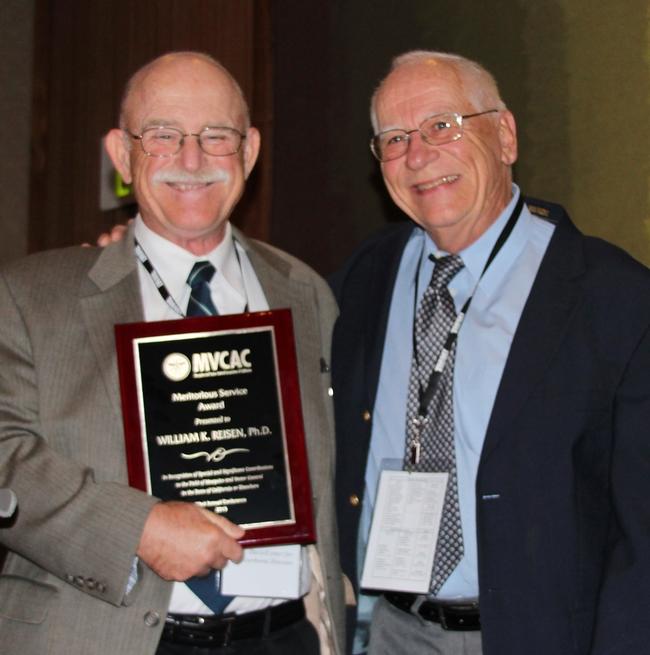
"Bruce clearly helped to synergize close collaboration among the University of California, the Mosquito and Vector Control Association of California, and the California Department of Public Health that persists today and has led to California’s leadership in arbovirus management programs at the national and international levels. My hope is that this description illustrates how Bruce selflessly assisted and promoted the careers of the many scientists fortunate to fall under his guidance and direction.”
UC Davis distinguished professor emeritus Thomas Scott:
“Bruce had a rich life with unique experiences, and he made significant contributions to science. He traveled to and worked at sites around the world investigating the biology and control of mosquitoes. When I came to Davis, I knew him by his reputation and was excited to meet him in person and to work with him. He did not disappoint. He took me under his wing and personally introduced me to the key players in mosquito control and research across California. I remember vividly the frequent insightful, constructive conversations we had in his Briggs Hall office. But what I remember most about Bruce was his leadership style. He did a lot of good things to help and support other people. Bruce was a science facilitator and most importantly he was a good man.”
UC Davis distinguished professor Bruce Hammock:
“Bruce tried to hire me at OSU, but during the interview, I pitched how great UC Davis was. I was offered the OSU job, so I told Bob Washino and Bob and I pushed and succeeded in hiring him at UC Davis. What a wonderful colleague and known internationally for his role in public health. When we had some minor mosquito outbreaks (viruses and once even malaria) in Yolo and Solano counties, Bruce Eldridge and Bob Washino were so excited that I thought we would soon be setting up cots in the hall (pre-COVID). He, Washino and I traded Army stories. Bruce and I were in the Army Medical Service Corps—me, thanks to the draft, and Bruce as a career. He was amazing as an Army research scientist and then came to UC Davis to run the mosquito program.”
UC Davis professor Greg Lanzaro, Department of Pathology, Microbiology and Immunology, UC Davis School of Veterinary Medicine, and former director of the UC Mosquito Research Program:
"I worked with Bruce as a post-doc from 1988 to 1991. The project was aimed at studying the population genetics of snowpool Aedes mosquitoes in California. Bruce was a great organizer and took joy in preparing the logistics of collecting mosquitoes at high elevations throughout the Sierra Nevada and Cascade Mountain ranges. He enjoyed being in the mountains in the early spring as the snow was melting and the mosquitoes active in their larval stages. Bruce was meticulous when approaching the work and I learned a great deal about mosquito morphology and using keys to identify members of this difficult group of species. Bruce was a wonderful mentor, and I will remember him as such."
Steve Mulligan, retired district manager of the Consolidated Mosquito Abatement District, past president of Mosquito Vector Control Association of California (MVCAC), American Mosquito Control Association (AMCA), and the Society for Vector Ecology (SOVE) and former member and co-chair of the UC Public Advisory Committee on Mosquito Research:
“As director of the UC Mosquito Research Program, Dr. Eldridge played a major role in the funding and direction of UC research into the biology and control of mosquitoes. UCMRP research funded during his tenure not only benefited mosquito and mosquito-borne disease control in California but produced global impact. Bruce cultivated a close relationship with the Mosquito and Vector Control Association of California and promoted collaborations among UC scientists with members of the MVCAC. The California mosquito control community is saddened by his death.”
Steve Schutz, scientific programs manager, Contra Costa Mosquito and Vector Control District and former UC Davis Postgraduate Researcher:
"I had the privilege of working with Bruce as a postgraduate researcher and have fond memories of our field collecting trips to the mountains of California in search of snow pool Aedes mosquitoes. I first met Bruce at an ESA Annual Conference in New Orleans, after he responded to a letter I had sent to various departments around the country seeking postdoctoral research opportunities. He was looking for someone with experience in population genetics to work on biogeography of isolated populations of snow pool Aedes mosquitoes. It sounded fascinating, and I had never been to California at the time, so I loaded up my car and moved cross-country. I quickly discovered that Bruce had diverse (and unexpected) interests outside of entomology, including playing banjo in a bluegrass band and being a part owner/operator of a local short-line railroad. He occasionally brought his banjo along on our field trips, and we occasionally did a little ‘railroad archaeology’ investigating remnants of abandoned railroad lines in rural areas of California. These field trips, on which we were occasionally joined by Bill Reeves, remain one of the highlights of my career."
Gary Goodman, general manager, Sacramento-Yolo Mosquito and Vector Control District:
“We were all very sad to hear of Bruce’s passing. He was a trustee on our Board since 2012 and served over a decade in that role. Our Board was close with Bruce and appreciated all of his hard work and dedication to further the goal of protecting public health as an advocate for mosquito control. Bruce was a genuine person who cared about his work and those around him in the pursuit of understanding more about the natural world. His presence will be missed in the world of entomology but more importantly his warmth and curiosity will be missed by those lucky enough to have worked, studied or simply talked with him.“
UC Davis doctoral alumna Sarah Wheeler, laboratory director, Sacramento-Yolo Mosquito and Vector Control District:
Bruce was a visionary that spent his career balancing the scale against vector-borne diseases. He had a keen intelligence, approachable demeanor, and a good dog or two by his side. He brought the folks in our field along with him and worked tirelessly to build connectivity and the flow of data. He will be missed, but his insight and forethought will continue to carry us into the future.”
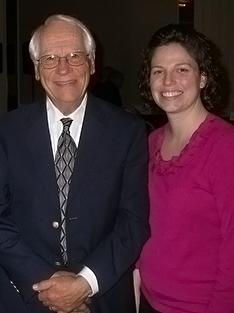
UC Davis doctoral alumna Tara Thiemann, associate professor and department co-chair, Department of Entomology, University of the Pacific, Stockton:
“I knew Bruce when I was a PhD student at CVEC. He was already retired but still active in research. Bruce was not my advisor, so he had no official obligation to me. Still, he made himself available to talk about projects, to edit dissertation drafts, and to help find the perfect word for a sentence when I was struggling. He provided a great amount of support for me and for many other budding vector biologists. For that, I am grateful. As an aside: My favorite memory of Bruce was at my PhD graduation party. I had made a mosquito cake topper out of gum paste. The first thing Bruce did was walk over to the cake to identify the mosquito to species.”
UC Davis distinguished professor emerita Lynn Kimsey, former director of the Bohart Museum of Entomology:
“Over the years before Bruce retired, he helped me with mosquito-related information for the museum and for revising the Mosquitoes of California book.”
Mosquito researcher Anthony Cornel of UC Davis Department of Entomology and Nematology and the Kearney Agricultural Research and Extension Center:
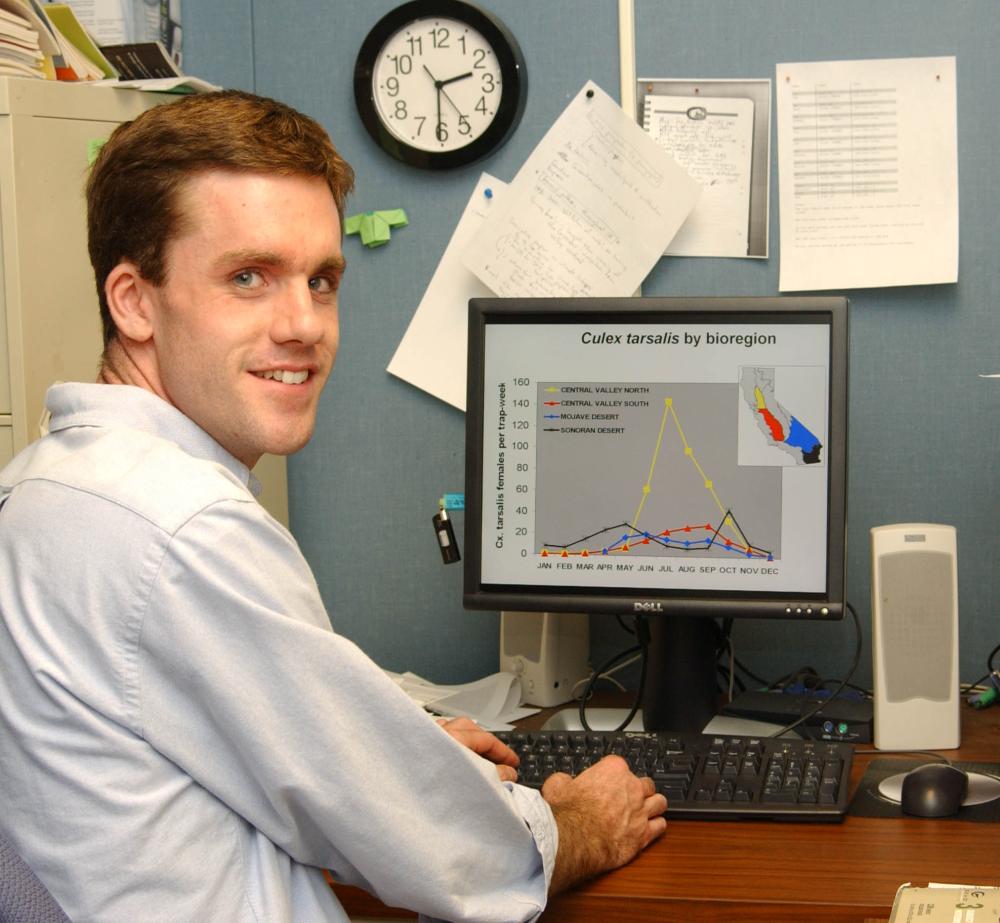
“Bruce was in the department when I joined in 1997. I always viewed him as a very polite and calm person.”
UC Davis distinguished professor Walter Leal, Department of Molecular and Cellular Biology, College of Biological Sciences and former professor and chair of the Department of Entomology:
“Thanks to Bruce’s leadership and the mosquito program, I secured (seed) funds to perform preliminary work that led me to be funded by the National Institutes of Health. When I presented my ideas to the mosquito program, Bruce, as the program director, asked challenging questions but was very supportive.”
After leaving OSU, Professor Eldridge and his wife, Shirley, established their home in Davis. The family includes a daughter, Deborah Thomson; two sons, Stuart and Kenneth; and three grandchildren and four great-grandchildren.
Cards can be sent to Atria Covell Gardens, ATTN: Shirley Eldridge, 1111 Alvarado Ave., Davis, CA, 95616. A celebration of life will be at 2 p.m. Saturday, April 26, in the Davis Community Church, 412 C St., in Davis, the family announced. In lieu of flowers, the family requests that donations be made to a favorite charity.
Interviews
Bill Reeves Interviews Bruce Eldridge in a 2017 Aggie Video production:
https://video.ucdavis.edu/media/Bruce+Eldridge/0_zds3jvj3/25823432
Mary Ann Liebert Interviews Bruce Eldridge (2017) for the journal Vector-Borne and Zoonotic Diseases
https://doi.org/10.1089/vbz.2007.5050
Tribute to the Rail Enthusiast Who So Loved Trains
Bruce Eldridge So Loved Trains by Ken Lorenzen
News Story (Archived)
Medical Entomologist Bruce Eldridge Receives International Honor
UC Davis Entomology website, Oct. 23, 2007
